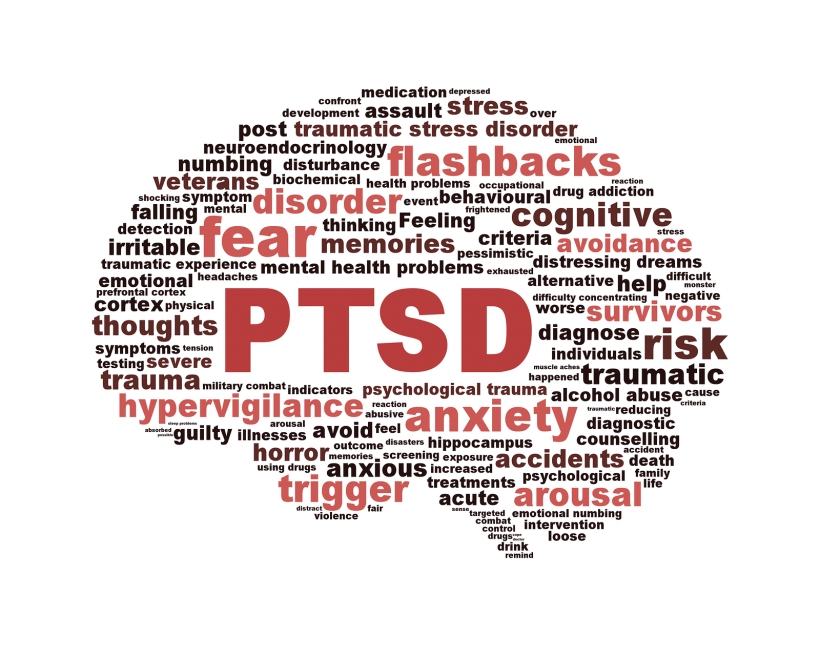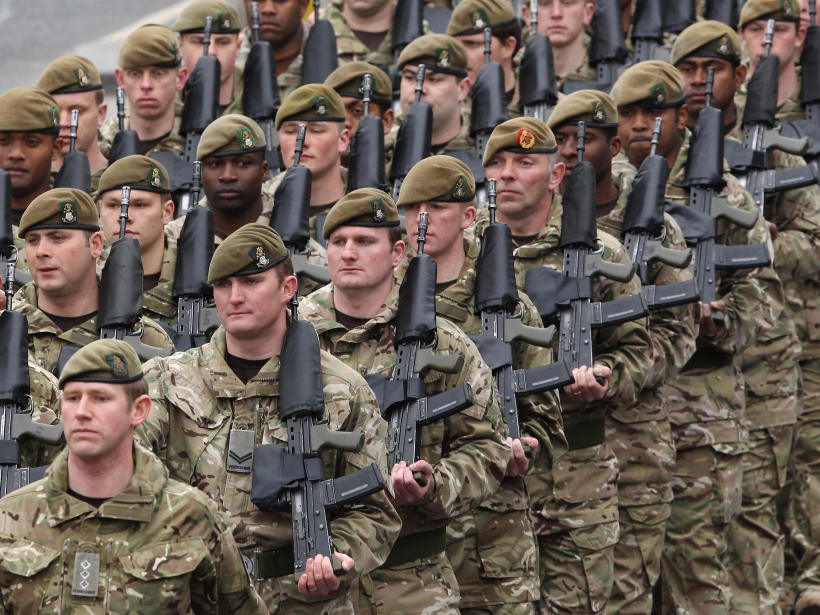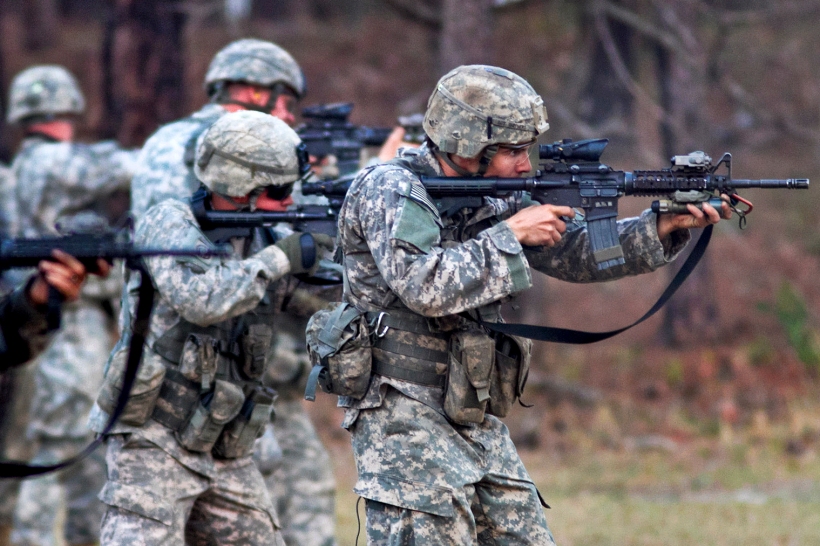
Atwood’s novel MaddAddam again explores the recurring idea of Painball, a group of criminals who are offered the chance to be put into an arena to fight and kill other murderous criminals. The reward for victory is life; everyone else dies. The effects of being in the arena seem to be a systematic deconstruction of the human identity, resulting in, basically human monsters, once the victors are liberated from Painball. Most perpetrators, after surviving a session of Painball, return to the arena for the thrill of it. Outside of the arena, these men tend to be glassy-eyed, unstable individuals who require careful surveillance in order to ensure the peace. Given the fact that armies, institutionalized training programs revolving around teaching someone how to kill another person, it might be worth learning what exactly that kind of environment does to you mentally.

Against common conception, Mental health counselor Jim Dooley, in an interview, notes that it is not the loss of a friend that leads to the greatest mental trauma, but it is actually the act of taking a life. Dooley says, “I think it is a loss of yourself[…]. And I think that once they understand that, they can’t go back again They can’t say that it didn’t happen, or maybe somebody else did it” (Dooley psb.org). To take a life in an act of ownership of your actions that are beyond denial. There is understanding and there is a death of self.
The army’s response to that is to relegate the problem to PTSD and observe it very vaguely and impersonally, via questionnaires, asking the participant if they have PTSD. Military stigma against PTSD has declined in recent years, but it still exists and few people want to admit to having it. Despite that fact, PTSD seems to be what Painballers are suffering from. Sebastian Junger, a soldier who was deployed in Afghanistan, describes the experience of PTSD:
From an evolutionary perspective, it’s exactly the response you want to have when your life is in danger: you want to be vigilant, you want to react to strange noises, you want to sleep lightly and wake easily, you want to have flashbacks that remind you of the danger, and you want to be, by turns, anxious and depressed. Anxiety keeps you ready to fight, and depression keeps you from being too active and putting yourself at greater risk. This is a universal human adaptation to danger that is common to other mammals as well. It may be unpleasant, but it’s preferable to getting eaten (Junger vanityfair.com)
These circumstances are exactly what the Painballers are experiencing. Their fear, a result of living in a kill-or-be-killed world is completely rational in the realm of survival. Considering the fact that some Painballers are multi-seasonal, it makes sense for them to have adopted this fear into their daily lives. Atwood describes them:
Fueled by their greyworld celebrity position, the Painball vets were pumped full of I-won hormones and thought they could tackle anyone, and they welcomed the chance to take a poke at large, solid-looking bouncer such as Zeb the Smokey Bear. He was warned by Jeb never to turn his back on a Painballer: they’d whack you in the kidneys, blam you on the skull with anything handy, squeeze your neck till your eyes popped out of your ears.
How to recognize them? The facial scars. The blank expressions: some of their human mirror neurons had gone missing, along with big chunks of the empathy module: show a normal person a child in pain and they’d wince, whereas these guys would smirk (Atwood 297).
These Painballers display a complete lack of empathy and the ability to inflict physical violence ruthlessly and without concern. Whether this is the result of PSTD eroding their empathy, or a choice that they have made after deciding that killing is the life that they enjoy, it is hard to tell. But the idea that killing makes your crazy is solidly found in our society, and the idea that the army propagates teaching how to kill is a problem. Without proper treatment, is it possible for groups of soldiers to become like the Painballers, intent on destruction and pain? Institutionalized death is an idea that is frowned upon in Atwood’s works, but at the same time, our real world institutionalizes death as a form of political defense, even though, in recent years, our armies have been deployed into foreign countries pro-actively instead of being used as a defensive measure.
The lack of empathy found in the Painballers exists as a real problem Toby and company. MaddAddam is coming to a point where a conflict between our protagonists and the Painballers is inevitable, and considering their lack of empathy, and the effects of living with PTSD, as well as the vile nature of the Painballers, established throughout the series, it is possible that the MaddAddam group will lose many people, as well as the group of Pigoons. Could empathy solve this problem? Is it even possible for the Painballers to feel empathy again? Or will Toby again be praying to the Liobam for strength, believing that it will grant her what she needs to remove these killing machines as a threat to her friends and family?

Resources:
Atwood, Margaret. Maddaddam. Vintage Canada. 2013.
Dooley, Jim. “The Impact of Killing and How to Prepare the Soldier”. PBS.org. http://www.pbs.org/wgbh/pages/frontline/shows/heart/themes/prep.html
Junger, Sebastian. “How PTSD Became A Problem Far Beyond the Battlefield.” Vanityfair.com. June 2015. http://www.vanityfair.com/news/2015/05/ptsd-war-home-sebastian-junger.
Keevil, Rosemary. Addiction and Veterans. 2016. Wordle. http://www.rosemarykeevil.com/3969-2/
“Post-Traumatic Stress Disorder (PTSD).” Canadian Mental Health Association. http://www.cmha.ca/mental_health/post-traumatic-stress-disorder/#.WP1qidLyvIV
“Posttraumatic stress disorder (PTSD) – causes, symptoms, treatment & pathology.” Youtube, uploaded by Osmosis, 5 September 2016, https://www.youtube.com/watch?v=hzSx4rMyVjI.
Sengupta, Kim. The British Army. 2015. Photograph. http://www.independent.co.uk/voices/the-british-army-isnt-large-enough-to-halt-refugees-let-alone-take-on-vladimir-putin-10428872.html
Shrivastava, Pratyush. US Army Camoflague. 2015. Photograph. http://www.eteknix.com/the-us-army-introduces-a-new-camouflage-design/
“Understanding PTSD’s Effects on Brain, Body, and Emotions | Janet Seahorn | TEDxCSU” Youtube, uploaded by Tedx Talks, 14 March, 2016, https://www.youtube.com/watch?v=BEHDQeIRTgs.

April 28, 2017 at 11:54 pm
I completely agree with you about the fact that the Painballers have developed a kind of mental illness by going through war. The act of killing is pretty traumatizing for any being, especially if they are in a situation where they have no choice. When something like this happens, it is easy to forget about empathy, but I do believe that it is possible for someone like the Painballers to get that feeling back. However, considering the circumstances of these people, I don’t think it would have been possible because there are not enough people who want them to feel safe and comforted. Imagine, you get out from a battle round for the third time and you discover the world you are used to is destroyed and the only people left either want you dead or want you as a tool to get a bigger gene pool in the human specie, which have suddenly become endangered. In that case, I don’t think that empathy is possible.
LikeLike
April 30, 2017 at 6:15 pm
Great blog post! You seem to have done some really good research! However, I don’t know if I would compare painballers with army soldiers suffering with PTSD. Considering that painballers are placed there because they have commited some sort of crime, who knows if these people didn’t already lack empathy before going in there? That vacant look in their eyes and the lack of empathy could be because they have psychopathic tendencies. Soldiers develop PTSD because of the traumatic expriences but the painballers we’ve read about in the book don’t seem that traumatized; they seem to have developed some sort of liking to violence (if they didn’t already have it). I completely agree that having to kill others is traumatizing but these painballers look like they’ve enjoyed it far more than they should have.
LikeLike
May 2, 2017 at 2:26 am
Honestly, great job on your blog! Being a psych student, this is something that is definitely up my lane. I completely agree with all the points that you mention in your blog. The aspect of the Painballers in the last book is something that had definitely intrigued me, but didn’t necessarily look into it. PTSD is a very serious disorder and I like that you took the time to do your research and intertwine it with your good findings from the book. In my opinion, Amanda also suffered from PTSD after being released from the Painballers by Ren and Toby. All in all, very good work — well written and very informative!
LikeLike
May 2, 2017 at 6:12 pm
Interesting post! I also wonder if training our soldiers to have the “killing” mentality is the right thing to do. I think that in order to build a strong army, it is only right for soldiers to dedicate their lives to their country but I also feel like it’s hard to find these type of mentalities. I think we can all agree that from our past experience, we’ve seen more selfish humans than selfless ones. If we think about it, it is hard to find soldiers with that type of determination to be willing to die for the country. That’s why I think that if a soldier goes through a total institution with hardcore training, I feel like it’s going to be hard for that soldier to turn back to his regular life. It’s almost like there’s no way out. It’s either if someone do not hold the determination to protect the country and is facing fear and anxiety throughout his journey at the army or it’s either if someone is totally determined but at the same time, totally changed to a different human being resulting from his hard training.
LikeLike